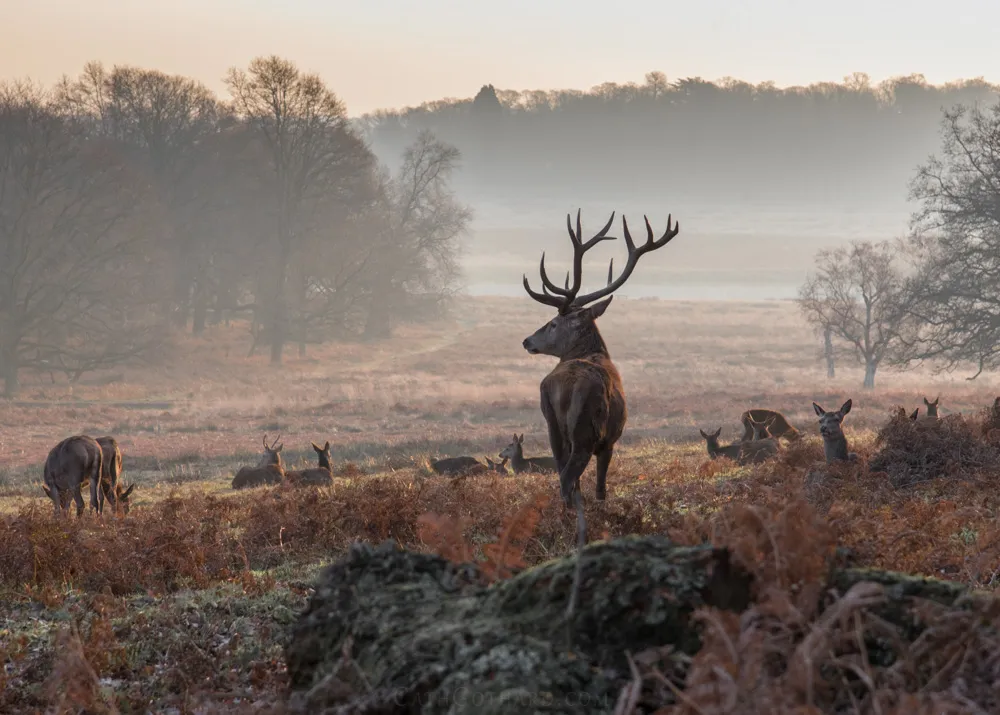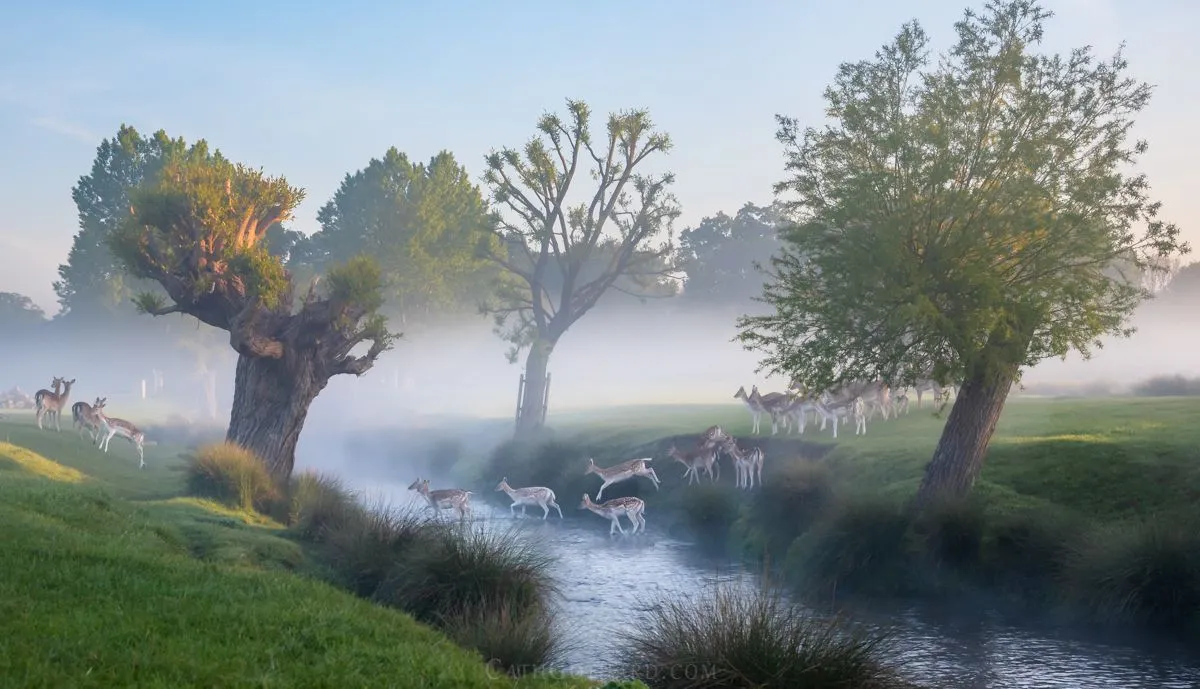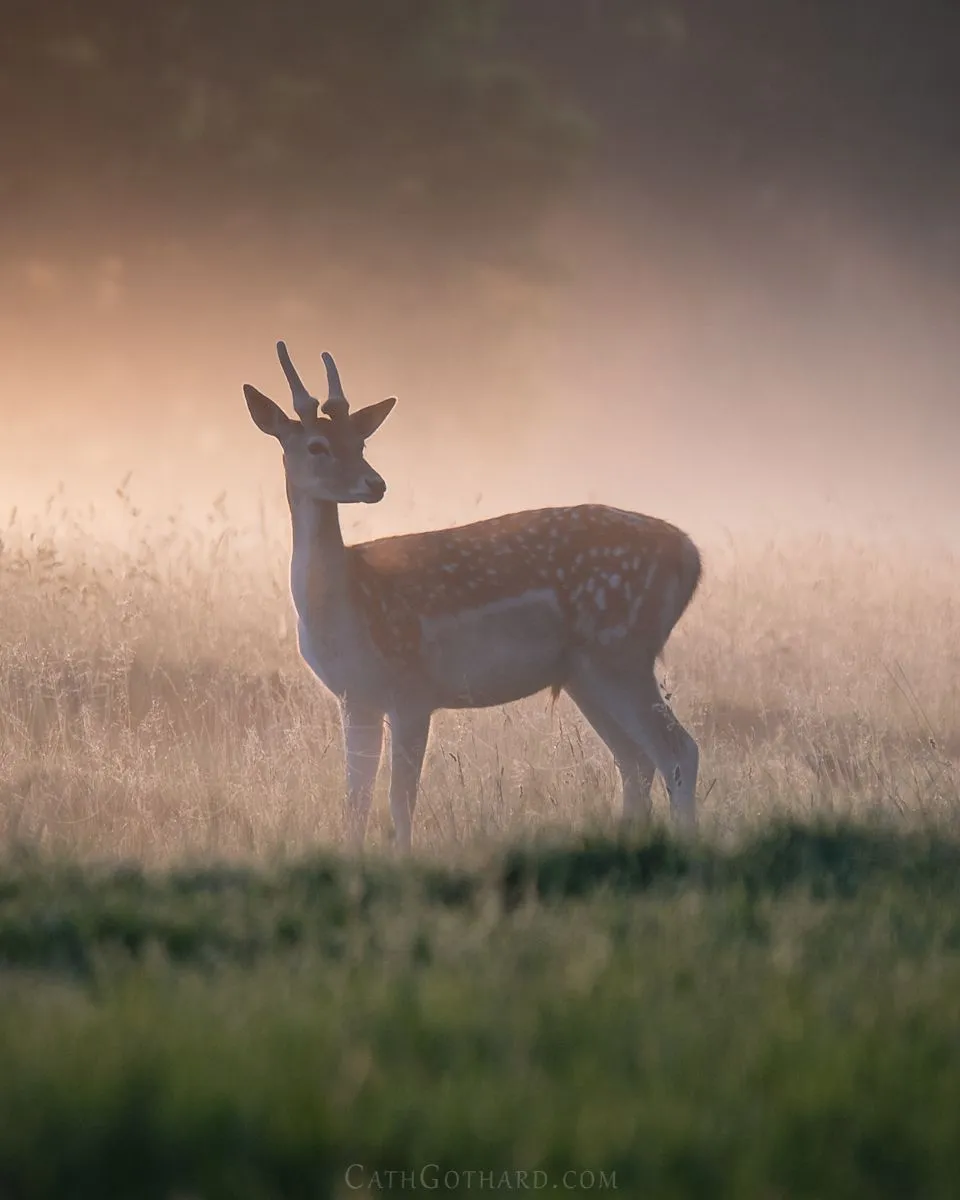I've posted a number of blogs about my recent visits to the park, but I haven't yet mentioned the wild deer that live within the it's walls.
Some background information...
Richmond Park was created by King Charles 1 in 1637, as a hunting park, surrounded by an 8 mile brick wall to prevent the deer from straying. The deer herds have remained in the park ever since, and are an iconic presence in it's landscape.
The park is home to approximately 630 Red and Fallow deer. The fallow deer are quite skittish, but the larger, red deer are more imposing, and more likely to stand their ground if approached by humans. During the birthing season in the summer, the hinds will be very protective of their young, and are known to chase away any humans who come too close. Early Autumn brings the rutting season. During this time it's best to stay well clear of the stags, who fight with one another for the hinds. It's a dramatic spectacle, best observed for afar. Large, stressed, testosterone fuelled mammals, with killer spikes on their heads, are to be avoided.
Twice yearly there is a cull, to keep the numbers consistent. Without any natural predators, the deer population in the park would explode, which would lead to a lack of food and ultimately, sickness and starvation for the animals. It's a sad, but seemingly necessary intervention, to maintain the health of the herds within the walls.
During the culls, the park is completely closed overnight. This has caused me many a frustrated morning standing outside locked gates, watching epic light unfold, waiting for the man with the key to arrive and open the pedestrian gates.
The deer shed their antlers in early spring, and re-grow them over the late spring and summer months. Despite my wanderings, I have never found a deer antler. I would love to know what happens to them all..... :)
I don't usually photograph the deer for a couple of reasons. Firstly, I could really use a longer lens for photographing the wildlife. My current longest lens is a 210 mm f/4. Secondly, there are a lot of photographers in the park who come to photograph the deer. They are already very photographed animals.
When I bought my camera, I wanted to photograph landscapes. Ideally, I wanted to photograph mountains. However I live in London, and one makes the best of what is available. In my case, it's the park. Although there are definitely no mountains, and to be honest no real vistas at all, there is a wealth of natural beauty, and intimate landscapes to photograph. Particularly if there is mist or fog. My brain now holds a map of it's layout - the hidden woodland spots that look amazing when a bit of mist infiltrates it's perimeters. Where looks good if it's frosty, but there is no atmosphere. The best place to photograph a spring full moon...
Despite my obsession with the park's landscape, sometimes a scene presents itself that is impossible to not photograph. I don't seek out the deer, but I do have some images of deer that I have taken, that I'm really happy with.
Monarch of the Glen

I took this one 5 months after buying my camera, in January 2019. It was an uneventful winter sunrise, but I decided to take a wander up the hill, and came across this magnificent stag with his harem of hinds. There was just a touch of atmosphere in the air that softened the distant landscape. The scene resembled a Scottish Glen, rather than a London park. I quickly pulled out my camera and took the shot before he moved from his pose. I'm sure he knew how impressive he looked....
Deer Crossing

This was a wonderful moment I witnessed in April 2019. I'd had a morning down by the brook, and was about to head home, as the best of the light was over. A heard of fallows were congregated on the opposite bank, and I had a feeling they were thinking about crossing. My initial instinct was to grab my telephoto lens, but I held back. The idea of capturing the whole scene, as a landscape image, with the heard flowing through, popped into my head. I sat on the grass to make myself less conspicuous, and set my lens to a wide enough focal length to fit both river banks. I made sure that my shutter speed was fast enough by cranking up the ISO, hoping that image noise wouldn't be too much of an issue, switched to manual focus, and focused on the area that the deer would cross. Then I just waited. After about 10 minutes, it began. I took shots continuously, and this one above is my favourite image. The silhouette of the deer mid jump is perfect, and I love that some of the deer that have already crossed and are on the opposite bank. Since this photo, I've spent countless hours by the brook, but have only ever seen this happen again in the dark. It was a very rare experience, that I was lucky to witness and photograph.
Despite not being a wildlife photographer, these 2 images were my top sellers when I briefly opened an online print shop. Maybe there is a lesson in there somewhere.....
Summer Fallow Buck

I took this photo on a glorious misty morning in early June 2019. The light was so beautiful, and I love the cobwebs that are strung between the long grass, catching the light. Mist is quite rare in the summer months, so it's always nice to make the most of it.
Since 2019 I haven't photographed any deer at all. I think I've convinced myself that I am not a wildlife photographer, and have limited myself in what I shoot. I don't think self imposed limits are a good thing, particularly when they're not even conscious choices. Writing about my photography on Hive is really helping me to take a step back from my work, and view it with fresh eyes. Maybe in 2022, I will try and take some more photographs of these wonderful park residents.
This blog was prompted by a @photofeed competition that is running this week, with the topic of 'wildlife'. I have a feeling that the first 2 images are probably more landscape than wildlife, but I might enter the Summer Fallow Buck. I think there will be strong competition this week though. :)